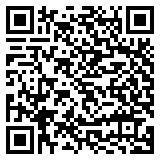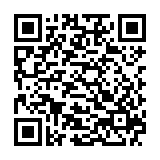In a world where communication is the key to building strong relationships and delivering exceptional service, businesses must embrace inclusivity in customer interactions. However, for the deaf and hard-of-hearing community, traditional methods of communication often fall short, leaving them feeling excluded and misunderstood. This is where the power of sign language in customer service shines, bridging the communication gap and creating a more inclusive customer service experience.
In this article, we explore the immense significance of sign language in customer service and why it deserves greater attention from businesses. We will delve into the benefits of inclusive customer service, the accessibility it provides for the deaf and hard-of-hearing community, and its positive impact on communication and understanding. Additionally, we will discuss the empowering effects of sign language, both for individuals within the community and businesses seeking to create more diverse and inclusive environments.
Understanding the importance of sign language in customer service can pave the way for a more inclusive future where every customer’s needs are met, understood, and valued. Let us embark on this journey together, exploring the power of sign language as a bridge to stronger connections and exceptional customer experiences.
Understanding the Importance of Inclusive Customer Care
Inclusive customer service refers to providing equal access, support, and respect to all customers, regardless of their individual differences or abilities. It recognizes that each customer has unique needs and aims to create an environment where everyone feels valued and understood. Inclusivity goes beyond legal compliance; it fosters a culture of empathy, acceptance, and equal treatment.
Inclusive customer service has a profound impact on customer satisfaction and loyalty. When businesses prioritize inclusivity, they demonstrate their dedication to serving all customers, regardless of their backgrounds or abilities. This fosters a sense of belonging and trust among customers, increasing satisfaction.
Sign language plays a pivotal role in promoting inclusive customer service. By incorporating sign language, businesses can effectively communicate with and cater to the needs of the deaf and hard-of-hearing community. Sign language bridges the communication gap and allows customers who rely on visual communication to engage fully with customer service representatives.
Sign language enhances inclusivity by providing equal access to information, assistance, and support. It empowers deaf and hard-of-hearing individuals to express themselves more freely, ask questions, and receive accurate responses.
Sign Language in Customer Service: Increasing Accessibility for the Deaf and Hard-of-Hearing Community
Deaf and hard-of-hearing individuals face unique communication challenges due to their hearing loss. Verbal communication, which relies heavily on spoken words and auditory cues, may need to be more effective or impossible for them to comprehend. This can result in barriers to accessing information, seeking assistance, and participating fully in daily life, including customer service interactions.
Hearing loss affects a significant portion of the population worldwide. According to the World Health Organization (WHO), approximately 466 million people across the globe have disabling hearing loss. Within this group, some individuals rely on sign language as their primary mode of communication. By recognizing the size and diversity of this audience, businesses can understand the importance of catering to their needs and creating accessible customer service experiences.
Incorporating sign language in customer service offers numerous benefits for accessibility. It enables deaf and hard-of-hearing individuals to effectively communicate their needs, ask questions, and receive assistance. By providing sign language interpretation, businesses can ensure that their services, products, and information are accessible to this audience, promoting equal opportunities for engagement and participation.
Sign Language Customer Care Improving Understanding and Enhancing Communication
Written and spoken communication, the primary modes of interaction for most people, have limitations when effectively communicating with the deaf and hard-of-hearing community. Written communication may not capture the nuances of language, tone, and expression, leading to potential misinterpretation. Spoken communication heavily relies on auditory cues, making it inaccessible for individuals with hearing loss. These limitations can hinder clear and effective communication, resulting in misunderstandings and frustration.
Sign language, on the other hand, is a visual and expressive language that utilizes hand gestures, facial expressions, and body movements to convey meaning. It offers a rich and dynamic communication that goes beyond mere words. By incorporating sign language in customer service interactions, businesses can tap into the visual nature of sign language and provide a more comprehensive and nuanced means of communication for the deaf and hard-of-hearing community.
Challenges and Obstacles in Deploying Sign Language in Customer Service
One of the challenges in implementing sign language in customer service is the presence of misconceptions and stigmas surrounding sign language. Some people may view sign language as unnecessary or ineffective, leading to resistance or reluctance to adopt it. Overcoming these misconceptions requires education and awareness to emphasize the importance and value of sign language as a legitimate means of communication.
Implementing sign language in customer service may also involve costs associated with training, hiring, or contracting sign language interpreters and providing necessary resources. Businesses must consider these costs and allocate resources accordingly. While there may be initial investments, the long-term benefits of inclusivity and improved customer experiences can outweigh the expenses.
Technological and logistical barriers can pose challenges in incorporating sign language into customer service. Ensuring access to reliable video conferencing tools, implementing appropriate video call setups, and addressing potential connectivity issues are important considerations. Overcoming these obstacles requires businesses to invest in the necessary infrastructure and technology and provide training and support to staff members.
Final Thoughts
Inclusive customer service is essential for successful businesses. Sign language eliminates communication barriers, encourages inclusivity, and enhances positive interactions. It ensures accessibility for the deaf and hard-of-hearing community, empowering both customers and businesses. Despite challenges, embracing sign language demonstrates a commitment to inclusivity, increases customer satisfaction, and builds loyalty. Let’s work together to create a more accessible customer service landscape where communication has no barriers.





0 Comments